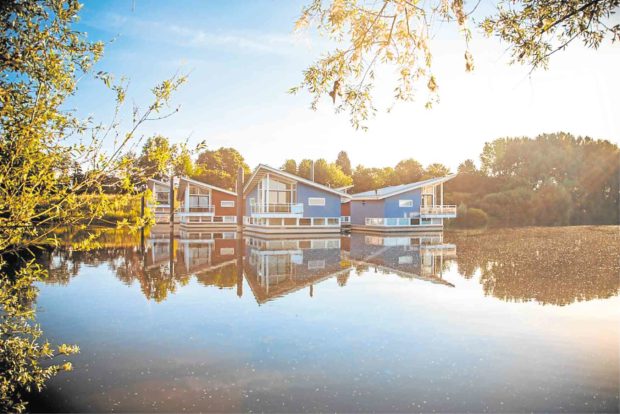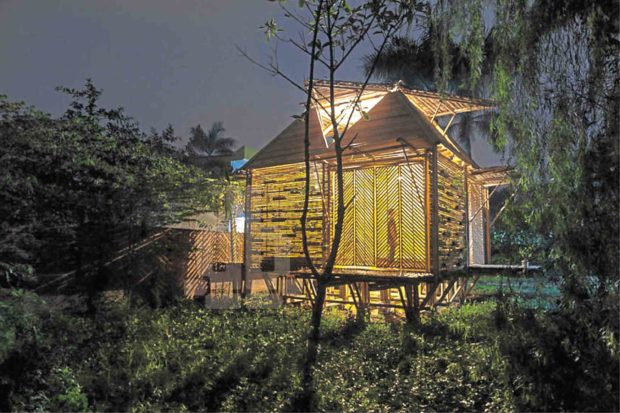The modern Noah’s Ark
If God told you to build an ark today, would you do it?
Chances are, with fewer trees and land space, building an ark would prove to be more challenging today compared to the biblical Noah’s time. Although, with the worsening floods, building an ark doesn’t seem like a farfetched idea.
In fact, people all over the world have started to develop modern versions of Noah’s great ark. While these structures are not exactly built in huge scales, they provide inhabitants safe shelter during storms.
Like Noah’s masterpiece, the efficiency of many of these houses have been called into question. Yet for those willing to try something new, amphibious houses offer a unique way to save communities in flood-prone areas. These homes range from luxurious cabins to affordable mass housing. The intent, however, remains the same for all: to ride out floods.
A life of luxury on water
Netherlands is one of the world’s best designed countries in terms of flood control.
True to form, its Ohé and Laak Meuse Villas were developed with amphibious intentions. These 16 homes built along the Maasplassen lakes were built to temporarily rise during high tides.
Half of the homes sit on concrete pads foundations while the other half on concrete piles embedded beneath the lake. All 16 are attached to a jetty and kept in place by anchoring piles.
The houses are built with timber frames to keep themselves lightweight. Adapting well to the frequent rising waters of the country, the homes can rise and detach themselves temporarily from their foundations up to 8 meters from their original level. These amphibious villas are also fitted with flexible utility lines that allow the houses to move vertically while remaining functional.
The homes are designed to offer a daily holiday experience for homeowners. With the tranquil surroundings and innovative design, the Ohé and Laak Meuse Villas do not come cheap. Nevertheless, these homes prove that “going with the flow” can sometimes provide the best living experience.
Saving community character
Float when it floods.
The tagline of the Buoyant Foundation Project (BFP) sums up the organization’s solution to heavy floodwaters. Established in 2006 in the wake of Hurricane Katrina, BFP aims to protect homes in New Orleans from floods while maintaining the character of the existing neighborhood.
The group’s founder, Elizabeth English, established the project as an alternative to permanently elevating homes that prevent neighborhood interactions.
BFP developed a buoyant foundation system, which turns an existing elevated house into an amphibious wonder. The prototype is specifically designed with the stilted New Orleans house in mind, but can basically be applied everywhere.
The system is simple and affordable. It costs roughly around $19 to $40 per square foot (or about P535 to P2,140 per square foot). Using the system, at least two people can manage to retrofit an existing elevated house without the need for heavy equipment.
When it floods, the retrofitted home simply rises with the water. Its movement is limited to vertical directions. The house’s internal layout and exterior facade need not be modified.
Presently, BFP has already helped design amphibious communities in Jamaica, Louisiana and Vietnam. The group has also won several accolades in international competitions. The project offers a promising alternative to communities who wish to stay the way they are in spite of the floods.
Amphibious house
Making the most of readily available materials, the Vietnamese firm H&P Architects designed a modern bamboo house that can float. The home combines bamboo with engineered materials. It finds inspiration in traditional huts of the tropics.
The house is elevated like our traditional bahay kubo, but the wall and roof panels can be raised to provide views and circulating air. The home can withstand flood up to 1.50 meters in height and allows post-flood survival with its vertical herb garden.
Construction can be done by the layman in less than a month. A typical house is estimated to cost about $2,500 or about P1.3 million. H&P Architects is currently developing the prototype for mass housing in the flood-prone areas in Vietnam.
Called the Blooming Bamboo house due to its unique shape, the house combines vernacular architecture with modern building techniques.
While originally designed to be a home, the structure can also serve as a classroom, health center or other communal dwelling. It is a good example of flood-resistant architecture that retains local character.
Seeking inspiration
Though the Philippines has yet to see its fair share of amphibious homes, globalization might bring in these kind of structures to our shores in the near future. Without a doubt, if these structures prove themselves effective in keeping homes safe from floods, local communities will no longer have to fear the rains.
The challenge, however, lies in convincing people to invest in these innovations rather than seek traditionally-built homes.
Perhaps one day, our country will also be able to create its own Noah’s Ark to share to the world, with “Made in the Philippines” stamped on the side.
Sources: Mircea Iancu from Pexels; boiten.net; www.dezeen.com; www.hpa.vn; www.maasvilla.nl; www.buoyantfoundation.org; www.newyorker.com; www.tree-hugger.com
The author is a licensed architect who studied abroad and currently works for DSFN Architects. She thinks amphibious homes would solve two problems at the same time—the need for flood-proof architecture and the lack of adequate housing.
















